Comparison of the best credit card deals in Australia. There are more than 260 different credit cards. Choose from a wide range of credit cards, each with its own unique features, such as different interest rates, bonus points, days without interest, and more.
Discover your best credit card option

American Express Qantas Ultimate Card
If you apply by 14 January 2020, are approved and spend $3k within 3 months on eligible purchases with your new card. T&Cs apply. Amex new members only.
Earn 50,000 Bonus Qantas Points
2. Coles Rewards Mastercard
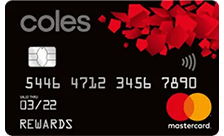
The Coles card is a good option if you are a Coles shopper. It offers a faster rate of earning points (upto a limit) on eligible spending. Flybuys offers bonus points when you spend $3,000 in eligible purchases within 3 month of approval and apply by March 3, 2025. The credit limit for this card is as low as $1000, which is a low amount for a card of such high quality.
Pros
Cons
2. Bankwest More World Mastercard

This card has a direct rival in the ANZ Black Card Rewards. Bankwest cards earn the highest amount of points per year (uncapped), but it is unclear what you will get out of your points. It’s a steep annual fee and you have to earn at least $270 worth of gift cards in order to make the cost worthwhile. Insurance is included in the deal, making it a little more attractive.
Pros
Cons
3. American Express Platinum Card
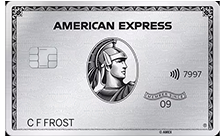
However, many people believe it’s worth every penny. If you qualify, there is a huge potential to earn points for both ongoing spend and signing up bonus points. You can transfer your rewards points to twelve major Airline Reward Partner program, including Qantas Frequent Flyer (QFF) and Virgin Australia Velocity Frequent Flyer.
Cardholders are entitled to a $450 Travel Credit annually to be used for eligible bookings via the Platinum Travel Service, American Express Travel Online and up to $400 as Global Dining Credit which can be spent at over 2,000 participating restaurant in 20 different countries. (Enrolment is required, T&Cs will apply, benefit expires 31 December 2025). All of this is in addition to the many other benefits that come with this Card, such as shopping and entertainment.
Pros
Cons
4. BOQ Platinum Rewards Credit Card
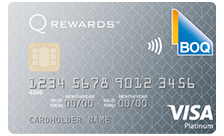
You can double your reward points by upgrading to the BOQ Platinum card. You will require a larger limit (starting with $6k), as well as a more expensive annual fee ($65 first year then $129). You will receive 100,000 points for signing up, subject to the eligibility criteria. The platinum card offers a lot and is worth it. Purchase protection, Travel Insurance, Interest-Free for up to 55 Days, Instalment Plans. Before you sign-up, BOQ does not reveal much information about how many points your account will be worth. This isn’t unusual. Flybuys can be a good option for you if this is your thing.
Pros
Cons
5. Bankwest More Platinum Mastercard
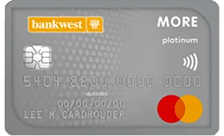
All Bankwest Platinum credit cards waive foreign exchange fees of 2.95 percent. This can be a significant saving if your travels take you abroad. Travel insurance is included in the $160 annual charge, so this card may be better if you are looking to upgrade from the Classic rewards cards. Bankwest claims that the points earned are higher, but what you get with your points is not clear. At this price, extended warranty coverage is an excellent value.
Pros
Cons
6. ANZ Rewards Black Credit Card
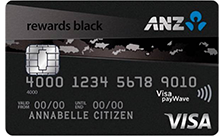
You should check this out if your main priority is to earn points. You will receive bonus points upon sign-up (if you spend the minimum amount) plus 1 point for every $1 that is spent. You can use these points for other airlines, hotels chains, or gift cards. Simple. This is a Black card so it’s expensive, but the $150 you receive in the first 12 months (again, depending on minimum spending) will help to offset the $375 annual charge. It has a maximum limit of $15k, which may not be suitable for all. There is also a 20.99% annual rate. Rates on purchases are higher if the balance is carried beyond the interest free period.
Pros
Cons
7. American Express Explorer Credit Card
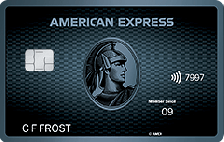
The card is worth looking at if frequent flyer benefits are important to you and if the possibility of using your points across multiple airlines is appealing. Virgin Australia and Singapore Airlines are just two of the 11 airline partner programs that you can use to redeem points. The $395 annual fee comes with a $400 travel credit that can be spent on domestic and foreign flights, hotels, or car rentals. The Card offers free domestic and international Travel Insurance with the purchase of a return ticket.
Pros
Cons
8. Bankwest More Classic Mastercard
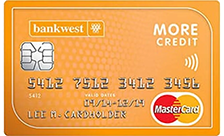
Bankwest’s entry-level reward card is available with a 19.99% per annum interest rate. A $100 annual fee and an interest rate of 19.99% per annum are charged on purchases. Some cardholders who spend less will be lucky enough to recoup their fee via rewards. Balance transfers at 0.00% annually This offer is acceptable but not exceptional. The maximum 44 interest-free days (14 payment days) and the six month period are also average. There’s nothing wrong with this card, but also nothing groundbreaking.
Pros
Cons
9. HSBC Platinum Credit Card
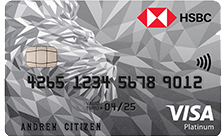
This Platinum Card offers rewards, travel coverage and 0.00% annually. Balance transfer is available for 12 month with a 2 percent fee. Card fee is waived for the first 12 months, then $149 per year. Two lounge passes or travel insurance may help you get this card. You may get a reward program but it’s not detailed until you join, so don’t count on it to be the final touch when you apply.
Pros
Cons
10. ANZ Rewards Platinum Credit Card
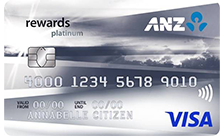
In terms of price and perks, this card is less expensive than the Black Card. It has a lower-ish minimum spend of $6k so is more accessible to those who don’t spend as much. The $50 credit and bonus points are still available (subjected to the minimum spend). As you’d expect from a rewards card with a high rate of interest, this card is still a good option.
Pros
Cons
11. CommBank Smart Awards Credit Card
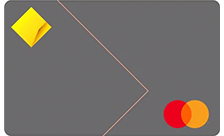
Spending at least $2K per month is required to avoid the monthly fee. Qantas Frequent flier points or CBA point (which are redeemable for gift cards) can be earned. Earning points is fine, but it’s no market leader. It’s not a market leader. This card has a lot to offer, including travel insurance, lounge entry (for a small fee), and interest-free credit for up 55 days. The most rewarding card is for those who pay their monthly bill and use the card often. The rate of interest on the revolving card is high (20.99% p.a.).
Pros
Cons
12. NAB Rewards Signature Credit Card with Velocity
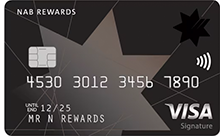
Fly Virgin? You will probably enjoy this card. It’s good to get 80,000 Velocity points bonus (split into two years 80/20). You also only need $3,000 to qualify. The $15k maximum limit is very high and could reduce your borrowing ability elsewhere. The annual charge is $145 the first year and then $295 year two. Is this card worth the extra cost over the Platinum, which has an annual fee that is lower? Not likely.
Pros
Cons
NAB Rewards Signature Credit Card

You can get a toaster or anything else you want from the NAB Points Store, or transfer your points to any airline (except Qantas) with this 180,000 NAB point sign-on bonus. It’s an impressive sign-up bonus, but you’ll have to pay a $24 monthly charge unless the minimum spend is met. 20.99% p.a. NAB credit cards come with a 44-day interest-free period and a flat rate of interest on all purchases.
Pros
Cons
Bank of Melbourne Amplify Rewards Signature
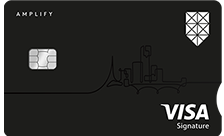
The card offers a slight upgrade over the Platinum, but at a cost of $295 per year ($199 for the first year). If you spend enough, there’s a sign-on bonus of 150,000 points. The points are valued at around $675. Your benefit in the first year is $476. It’s not bad, but if you keep the card and spend on average about $30,000 in a year without revolving the balance, or using it abroad, then you will receive 45,000 bonus points which are worth around $200. However, you have to pay $295 and earn the same amount of points.
Pros
Cons
BankSA Amplify Rewards Signature
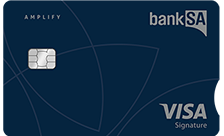
The card offers a slight upgrade over the Platinum, but at a cost of $124 per year ($49 the first year). Spend the required amount and you’ll get 100,000 bonus points. The points are valued at around $450. Your benefit in the first year is $476. It’s not bad, but if you keep the card for a full year, spend on average about $30,000, and do not use it abroad or revolve the balance, then you will receive 45,000 bonus points. This is about $200 worth of value, and you pay just $124.
Pros
Cons
Suncorp Clear Options Platinum Credit Card
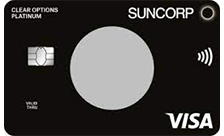
NAB is the issuer of Suncorp Cards. The $99 fee is low, and we are off to an excellent start. To reach this level, you’d need to spend around $16,000. The annual fee will only be covered. Sign-up bonuses (if eligible) make all the difference during year one. The card also offers other premium features such as travel insurance and balance transfer.
Pros
Cons
Westpac Altitude Rewards Black Credit Card
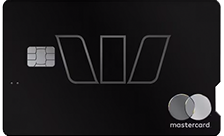
This card lets you choose between Virgin, Singapore Airlines, or toasters as your preferred airline. It’s strange that you can earn $6 per dollar when flying with Qantas. However, you cannot transfer the points to another airline. This card costs $295 annually, but the first year is only $150. This card is usually only good for the first year with its juicy sign up bonus. However, this one has a part of it deferred into year 2. Be sure to keep that in mind.
Pros
Cons
Top 10 best credit cards & offers in Australia
Low interest rate
G&C Mutual Bank Low Interest Rate Visa Credit Card 7.49% pa. Purchases are subject to a 4% interest rate, plus a $50 annual fee.
No Annual Fee Credit Card
Virgin Money Credit Card No Annual Fee: $0 annual fees, and 0% p.a. Spend up to 6 months with 0% interest (reverts to 19.99% annually)
Longest balance transfer at 0%
NAB Low rate Card balance transfer: 0% for the first 28 months and then 21.74% annually. First year fee is $0 and thereafter $59. The balance transfer fee is 2%.
The biggest sign-up bonuses
Citi Prestige Credit Card: Earn up to 250,000 Citi reward point bonus when you spend at least $10,000 on eligible purchases during the first three months after approval. Citi PayAll Payments, Cash Transfers, Special Promotions Interest, Fees, and Balance Transfers do not qualify as eligible purchases. The criteria for spending excludes any refunds, Chargebacks and Special Promotions. The $700 annual fee is charged.
Most rewards card earn rates
Bankwest More World Mastercard – Earn 2.5 points per $1 on eligible purchases. 19.99% p.a. Spend $270 annually and get 19.99% off.
Credit cards with zero interest
Citi Rewards Card: 0% annual percentage rate Spend & transfer balances for 15 month. Balance transfer rates revert to cash advance, 2% BT fees apply. T&Cs apply. Annual fee $199
Top Qantas frequent flyer card
Qantas American Express card: Earn 1.25 Qantas point for every $1 you spend on everyday purchases. (Unlimited earning potential*) You can also earn 50,000 Qantas Bonus Points if you apply for your card online before 14th January 2025. Once approved, spend $3k in eligible purchases within 3 months. T&Cs apply. Amex only for new members Annual fee $450.
Top Velocity frequent flier card
American Express Velocity Gold Card: Earn – 2.25 points for each $1 you spend on eligible purchases in Virgin Australia. If you apply for your Card online by 21st January 2025 (and are approved), and make eligible purchases of $3k within the first three month, you can get 60,000 bonus Velocity Points. T&Cs apply. Amex Card members only. The annual card charge is $440.
Get a top business card deal
American Express Qantas Business Card: Earn up to 130,000 Qantas Bonus Points if you apply and receive approval by 14th January 2025. Then, spend $3k within 2 months on eligible purchases using your new card. T&Cs apply. Amex Cards are only available to new members. Annual card charge: $450
What’s the best credit card type for you?
1. Low rate credit cards
How do they work? The low rate credit cards were designed as an affordable credit card option, based upon the interest rate. In terms of features, benefits and rewards they are often fairly basic.
Purpose: The card allows for flexible payments while maintaining costs that are lower than those of other credit cards.
Interest rate: from 0.00% per annum to 13.99%
A good thing: Access to credit with a relatively low interest rate. (In certain cases, rates can even be lower that a personal loan.
What to watch for: Beware of cards with low rates based on an introductory special offer. The rate will rise later.
2. Interest-free credit cards
How to use: Interest free credit cards The card does not charge interest, but there is a monthly usage fee. Some standard credit cards provide a 0% introductory interest rate, but only for a limited time.
Function: This is a basic card designed for limited usage. Credit limits are generally between $1,000-$3,000. As a back-up or emergency fund, they can come in handy. The card will not cost you any money if it isn’t used.
Current interest rates: zero percent, either for a continuous period or an initial period.
What’s good? The lack of interest and credit limits limit the amount you can borrow and your cost.
What you should be aware of: There can sometimes be a high monthly fee. The card may be no cheaper than standard credit cards if you don’t use it. These cards don’t offer any rewards.
3. No annual fee credit cards
What they are: No-frills credit cards with no annual fees. This can be a great way to keep costs down, especially for those who use their credit card only for emergencies and/or pay off their balance each month. Credit cards that have no annual fees may not necessarily offer a low rate of interest.
Purpose: A card for those who don’t use their credit cards often and do not want to pay the higher fees associated with expensive cards.
Interest Rates: 8.99% to 23.99% per annum
The card may cost you nothing at all, depending on how you choose to use it.
Beware of: Do not accept any annual fee offer that is only valid for the first year or requires you to send a certain amount within a specified period.
4. Rewards credit cards
They work as follows: Reward credit cards allow you to earn rewards points by spending money. You can redeem these points for cashback, gift certificates, hotel stays and shopping on a variety of products.
Purpose Rewards cards are designed to help you earn points and get access to premium features like insurance.
Interest Rates: 12.49% – 23.99% per annum
Good: Earn points by spending money you’d be doing anyway.
Watch out for: Card offers that entice you with sign-up bonuses and rewards, but charge high fees or interest rates, or limit the amount of points you earn.
5. Frequent flyer credit cards
How to use them: Frequent traveler credit cards reward cards that are tailored for frequent travellers. The rewards are targeted at frequent travelers (e.g. The card offers a number of benefits, including earning points for flights and accommodation and redeeming those points on the purchase.
Most often, these cards are linked with credit cards Velocity and points cards Qantas.
Purpose Earn and redeem rewards and points on travel related purchases.
Rates of interest: 12.49% – 23.99% p.a.
Why it’s good for you: Offer rewards that are targeted and valuable to the cardholder.
Watch out for: Travel cards with niche benefits. These are only useful if you travel frequently and spend some time overseas.
6. Balance transfer credit cards
How it Works: Balance Transfer Credit Cards allow the transfer of a balance from an existing credit card. You will pay 0% interest for a set period. Low rate cards and reward cards may offer balance transfers.
Purpose Consolidate and pay off credit card debt within the limited-time period 0% interest.
Interest rate: 0% during balance transfer period. However, rates will increase to 8.99%-23.99%p.a.
What is good: The interest-free periods are generous, ranging from 12 to 24 months depending on the credit card.
Watch out for: Transfer fees can sometimes be charged, either in the form of a flat-fee or as a percent of the balance transferred. There are no interest-free periods on any new purchases made during the balance-transfer period.
7. Premium credit cards
What it is: The premium credit card has the highest annual fee, the largest credit limit and offers the best rewards. The premium versions of credit cards include gold, platinum and black. Designed with the purpose of maximising rewards and benefits for high earners, high spenders.
Interest rate: 19.99% up to 23.99% pa.
High-end benefits that may be exclusive for cardholders.
What you should be on the lookout for: The urge to spend more than your budget allows in an attempt to obtain premium card rewards.
8. Other types of credit cards
Travel Credit Cards Allow you to earn frequent-flier points that can then be redeemed for flights, accommodations, and other travel benefits. Some cards come with travel-friendly extras like 0% foreign transaction fee.
Cashback Credit Cards Payback Credit Cards give you a credit for a certain percentage of what you spend. You can also get cash back as gift cards.
Business Credit Cards Businesses credit cards offer a credit line for business customers. Business cards offer all the benefits of personal cards, such as reward schemes, interest-free periods, and balance transfer.
Student Credit Cards The Student Credit Cards are specifically targeted towards students who do not have a credit history. These are often basic credit cards, with low cost and few benefits.
Credit cards for stores The store credit cards offered by retailers are a way to earn rewards points. The cards’ other features will be the same as standard credit card. Store credit card are no longer available widely in Australia.
How to compare credit cards
Comparing credit cards begins with deciding what you want to do with the card. Get a credit card suited to your habits.
Useful rewards
Choose cards with rewards you’ll use. Be sure to read the eligibility requirements. You may only be eligible for bonus points after spending a certain amount.
Competitive interest rates
You will pay interest on purchases if you have a balance remaining after the interest-free period each month. Cash advances are charged at a different rate. You’ll have to pay interest if your balance is still outstanding at the end of each month after you’ve used up all of the interest-free days. There will also be a rate for cash advances that has no interest-free time.
High interest-free days
This is the number of days maximum you have to pay interest before the end of your statement period. The ideal card would have a number of days that are interest-free, such as 55. 55 days of interest-free credit is ideal.
Low credit card fees
The annual fees on credit cards can range from $0 and up to $1750. Some cards charge additional fees depending on what you do with the card. You should consider the value of the card before paying fees.
What are the fees?
An annual fee These fees can range anywhere from $0 to $1,000 or more for premium reward cards. Credit cards often waive their annual fees in the initial year, or each year if they spend a specific amount.
Fee for additional cardholder There are lenders who charge an extra fee per year for each card added to your account.
Foreign exchange conversion fee It is charged when you purchase in a different currency, even if you are in Australia. The fee is usually between 2 and 3 percent, but some credit card issuers do not charge international fees.
Charge for late payment In the event that you do not pay the minimum amount due on your card by the deadline, you may be charged with a fee. This fee usually ranges from $10 to 35 depending on the provider.
- Fee for cash advance You can pay up to 5% on the amount withdrawn in fees and interest.
- Cash advance in foreign currency You may be charged an ATM fee plus a foreign cash advance fee if you withdraw cash while abroad.
- Fee for balance transfers Not all cards offer balance transfer offers, but some do. These cards charge an upfront transfer fee ranging from 1-3%. This fee will be on top of the card’s yearly fee.
- Direct Credit Fee for Dishonor When you pay off your credit balance via direct credit, and then dishonour the payment, you could be charged a fee up to $2.50.
- Replacement fee A replacement card can cost up to 25 dollars if your card is lost or becomes unusable.
What insurance can you get?
Credit cards may offer a range of free insurance and protection. (Especially if the card is a higher-end card). These are the most popular inclusions:
Travel Insurance: Covers such things as emergency medical bills, loss of or theft of personal possessions, and cancellation of flights. Insurance for credit card travel could cover domestic or international travel.
Rental car insurance: May cover theft, damage, towing and other charges related to your rental vehicle. This often simply covers the excess on the insurance available through the car rental company.
Price protection: Covers the cardholder for changes to product prices and allowing you to claim the difference as a refund.
Purchase protection: Covers accidental damage, loss or theft of items you have paid for using your card. Extended warranty cover If you use your card to purchase items, they may be covered longer for defects than if a standard manufacturer warranty was applied.
How to qualify for a credit card in Australia
Credit card eligibility criteria can vary from one issuer to another. In order to be eligible for the majority credit cards offered in Australia, there are some basic requirements that you must meet.
- Minimum age of 18 years
- Australian citizens, permanent residents or holders of an eligible visa
- Have a source of reliable income
- You can have a good credit score
How to apply for a credit card
you can apply for credit card by phone, online, or even in certain stores at the register. Typical credit card applications can take 15 to 20 min. The card issuer will need supporting documentation as part of any application. The card issuer will ask for supporting documentation so that they can determine whether you’re able to comfortably repay your debts and your credit limit. You’ll be required to:
- Personal details
- Valid IDs such as driver’s license or passport
- Job history and current salary (verified using payslips).
- Your assets like your home or motor vehicle
- What you owe and what you presently owe
FAQs
What are the terms of interest-free days on credit cards?
Credit cards with interest-free period are the most common. The card issuer charges interest only after a specific time. It’s not uncommon for credit cards with 55-day interest free periods.
The interest-free periods start with most cards on the first business day after the end of your statement, and not when you make your purchase. Here’s an illustration:
- The 55-day interest-free period is available on your credit card
- You will receive interest-free days on the first of your statement term
- The first day of your statement period is 1 November
- The end of your statement period is 30 November
- Interest on purchases made in this time period is not charged until 25 December














